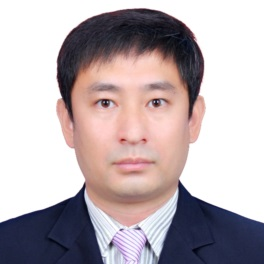Groundwater Resources: Pollution, Monitoring and Sustainable Development
A special issue of Geosciences (ISSN 2076-3263).
Deadline for manuscript submissions: closed (31 December 2016) | Viewed by 22177
Special Issue Editors
Interests: water resources; hydrogeology; groundwater quality; groundwater pollution; groundwater modeling; health risk assessment; geochemical modeling; hyrogeochemistry
Special Issues, Collections and Topics in MDPI journals
Interests: many aspects of hydrogeology, geochemistry, and sedimentology, including groundwater quality; stable isotopes; fluid-inclusion microthermometry; Mississippi-Valley-Type (MVT) mineralization; carbonate diagenesis; karst geology; field geology; Earth history; geology of Wisconsin and Michigan
Special Issues, Collections and Topics in MDPI journals
Special Issue Information
Dear Colleagues,
The objectives of this Special Issue of Geosciences are to examine the sustainable development, monitoring, and protection of groundwater resources, and to cope with groundwater pollution induced by natural environmental change and human activities. With intensification of human activities and environmental change, groundwater is changing both in quality and quantity. Therefore, research in groundwater resources is necessary and important to ensure that adequate groundwater resources are available for future generations.
This Special Issue aims to provide an outlet for rapid, widely accessible publication of peer-reviewed studies on various aspects of groundwater research. Both high quality research papers and review papers are welcomed. Research topics focusing on groundwater may include, but are not limited to the following: (1) groundwater resource monitoring, (2) sustainable development of groundwater resources, (3) hydrogeochemistry and pollution of groundwater, (4) groundwater quality and/or quantity assessments, (5) Water quality impacts from hydraulic fracturing, and (6) managing groundwater resources during drought
Dr. Peiyue Li
Prof. Dr. John Luczaj
Prof. Dr. Michael Schneider
Guest Editors
Manuscript Submission Information
Manuscripts should be submitted online at www.mdpi.com by registering and logging in to this website. Once you are registered, click here to go to the submission form. Manuscripts can be submitted until the deadline. All submissions that pass pre-check are peer-reviewed. Accepted papers will be published continuously in the journal (as soon as accepted) and will be listed together on the special issue website. Research articles, review articles as well as short communications are invited. For planned papers, a title and short abstract (about 100 words) can be sent to the Editorial Office for announcement on this website.
Submitted manuscripts should not have been published previously, nor be under consideration for publication elsewhere (except conference proceedings papers). All manuscripts are thoroughly refereed through a single-blind peer-review process. A guide for authors and other relevant information for submission of manuscripts is available on the Instructions for Authors page. Geosciences is an international peer-reviewed open access monthly journal published by MDPI.
Please visit the Instructions for Authors page before submitting a manuscript. The Article Processing Charge (APC) for publication in this open access journal is 1800 CHF (Swiss Francs). Submitted papers should be well formatted and use good English. Authors may use MDPI's English editing service prior to publication or during author revisions.
Keywords
- groundwater resources
- groundwater pollution
- groundwater quality assessment
- hydrogeochemistry
- groundwater modeling
- groundwater circulation
- groundwater recharge
- groundwater development
- groundwater protection
- groundwater management
- hydraulic fracturing
- drought risk






